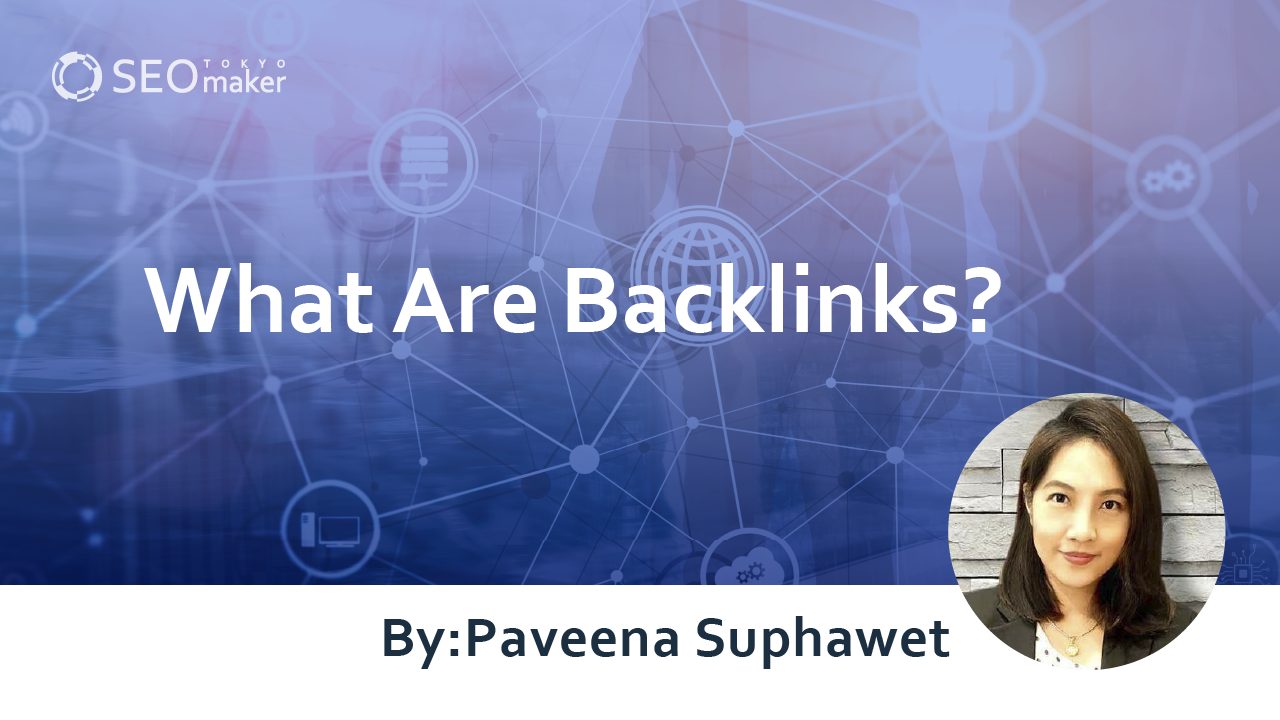What Are Backlinks? :An Overview and Techniques to Acquire Backlinks
contents
- 1 What Are Backlinks
- 2 Why Backlink Strategies Are Sometimes Deemed Ineffective in SEO ?
- 3 There Are Two Types of Backlinks
- 4 Three Conditions for High-Quality Backlinks
- 5 Points to Note When Implementing Backlink Strategies
- 6 Ways to Increase Backlinks
- 7 Specific Examples of Backlink Increase Strategies
- 8 Methods to Check the Number of Backlinks
- 9 Methods to Decline Backlinks
- 10 Common Questions About Backlinks
- 10.0.1 Q: Are there any tips for increasing backlinks?
- 10.0.2 Q: To enhance SEO effects, should I just focus on increasing the number of backlinks?
- 10.0.3 Q: What is it called when you place a link pointing outwards from your site?
- 10.0.4 Q: What is the difference between backlinks and reciprocal links?
- 10.0.5 Q: What is the difference between backlinks and internal links?
- 10.0.6 Q: What is the difference between backlinks and external links?
- 10.0.7 Q: What is “link juice”?
- 10.0.8 Q: What is PageRank?
- 11 Summary

In the context of website operation, backlinks refer to links from other websites to your own. These are crucial for enhancing the authority and evaluation of your website.
To acquire high-quality backlinks, focus on leveraging your strengths and creating content with high originality.
Tokyo SEO Maker, an SEO specialist media, will explain about backlinks, from an overview of backlinks, points of caution, to specific techniques for acquiring backlinks.
Related Articles on Backlinks
What are External Links? What are Outbound Links?
What are Backlinks? What are Citations?
What Are Backlinks
Backlinks, also known as external links, occur when an external website places a link to a page on another site.
In English, they are translated as backlinks. Typically, the term is used in SEO as when a site “acquires backlinks.”
The acquisition of backlinks is known to impact site evaluation, hence it is emphasized as part of SEO measures.
Why Backlink Strategies Are Sometimes Deemed Ineffective in SEO ?
Backlink strategies are often said to be ineffective in SEO for reasons including
- Employing outdated backlink strategies
- Gathering low-quality backlinks
- Seeking immediate effects in a short term
Google’s search engine continuously evolves its algorithm over the years, and the SEO effects related to backlinks have also changed accordingly. Therefore, strategies that were effective in the past may not yield results now.
Moreover, generally, backlinks should be acquired gradually. Consider the time it takes for the acquired backlinks to reflect on your site’s evaluation, a period of several months may be necessary.
There Are Two Types of Backlinks
Backlinks can be categorized into two types: natural links and spam links.
Natural links refer to those that are formed organically. On the other hand, spam links are gathered or placed indiscriminately for SEO or monetary purposes. The latter type of backlinks can lower the evaluation of your site, so it’s important to be cautious.
Effects of Backlinks
Backlinks have various impacts on your site. Particularly, acquiring what are considered high-quality natural links can yield positive effects such as
- Enhanced evaluation by Google
- Improved crawlability
- Creation of new pathways for traffic inflow
Enhanced Evaluation by Google
Acquiring high-quality backlinks can increase the evaluation of your site by Google’s search engine. There is a reason for this.
This is because Google views the exchange of links between websites as citations. Essentially, it means your site is recognized as having content worthy of being cited by external sites.
When the evaluation by Google increases, the so-called SEO effect occurs. As a result, your site’s article pages are more likely to appear higher in Google’s search engine results.
Improved Crawlability
Crawlability refers to how easily a search engine’s crawler can navigate through a website.
Related Article: What is Crawlability?
Search engines use robots known as crawlers to traverse from one website to another, collecting data from sites worldwide. In Google’s search engine, the GoogleBot crawler navigates the web.
By being picked up by GoogleBot, a website is first recognized by Google’s search engine. Therefore, by implementing backlink strategies to enhance crawlability, you are indirectly supporting SEO measures.
Becomes a Pathway for Traffic Influx
When external sites place backlinks to your own site, new pathways for traffic influx are formed. For instance, if a site with a large amount of traffic places a backlink to your site, you can expect to attract visitors from that external site to your own .
Three Conditions for High-Quality Backlinks
Not all backlinks are created equal in terms of quality. High-quality backlinks are expected to have a significant SEO impact typically have the following characteristics
- Links that occur naturally
- Links from highly regarded sites
- Links from relevant sites
Links That Occur Naturally
Links that are placed naturally are considered high-quality backlinks.
Originally, links on the web are supposed to be placed considering the convenience of users. Such backlinks, thoughtfully placed with user utility in mind, are called natural links.
For example, imagine a blog site operated by an individual who enjoys watching YouTube. They decide to feature their favorite YouTuber’s channel on their blog. In doing so, they place links to the YouTuber’s channel or video URLs on their blog.
Such links, proactively placed by bloggers or site operators, fall under natural links.
Links from Highly Regarded Sites
Backlinks from websites that are highly rated by Google are treated as high-quality backlinks.
Initially, every website registered with Google’s search engine is assigned a score. This score, known as PageRank, was publicly shared by Google as an indicator of a web page’s value.
Related Article: What is PageRank?
However, PageRank has since been made private. Nowadays, the concept of domain power is used to visualize a site’s evaluation.
Related Article: What is Domain Power?
Acquiring backlinks from sites with strong domain power is recognized as having content worthy of citation by high-quality sites, thus obtaining SEO effects.
Moreover, in recent SEO trends, as exemplified by Google’s EEAT (Experience, Expertise, Authoritativeness, Trustworthiness), the authority of a website is emphasized. For instance, receiving backlinks from highly authoritative sites like government agencies or organizations can yield exceptionally high effects.
Related Article: What is EEAT
Related Article: What is Authority
Links from Relevant Sites
Receiving backlinks from websites that deal with the same theme or genre as your own site is said to result in valuable backlinks.
For websites with the same theme, the nature of the visiting users is also similar. Therefore, the original role of the link (i.e., to guide) is more likely to be fully realized in such an environment. From the perspective of usability, the presence of a link from a website with the same theme can itself be considered valuable content.
Points to Note When Implementing Backlink Strategies
Backlink strategies have long been recognized as effective SEO measures. Consequently, some site owners attempt to gather backlinks through improper methods. When implementing backlink strategies, please be mindful of the following points.
- Low-quality backlinks can lead to penalties
- Unnatural ways of gathering backlinks can lead to penalties
- Backlinks with nofollow have no SEO effect
- Focusing too much on backlink strategies at the expense of content creation
Low-Quality Backlinks Can Lead to Penalties
Receiving backlinks from externally low-rated sites can sometimes be considered low-quality backlinks. Such backlinks can lower your site’s evaluation and even result in penalties.
Unnatural Ways of Gathering Backlinks Can Lead to Penalties
When collecting backlinks, it may seem beneficial to gather as many as possible. However, increasing links in an unnatural way can be deemed as link spam and may lead to penalties.
Google’s search engine has continually updated its search algorithm to exclude websites that engage in link spam activities. Recently, from December 2022 to the beginning of 2023, a link spam update was implemented to strengthen the exclusion of link spam.
Reference: Release of the Link Spam Update in December 2022 (Google Search)
Backlinks with Nofollow Have No SEO Effect
Websites can set links to be ignored by crawlers using a setting called nofollow. Consequently, backlinks from websites with nofollow settings do not produce SEO effects.
Related Article: What is rel nofollow?
Major social media platforms and blog services often use the nofollow setting. For example, Wikipedia, known as a global encyclopedia, has the nofollow setting applied.
Related Article: An In-depth Explanation of the SEO Effects of External Links on Wikipedia
Neglecting Content Creation Due to Excessive Focus on Backlink Strategies
There are various methods for SEO, and it’s common to see cases where, due to spending too much time on these strategies, content creation gets neglected, which is a reversal of priorities.
This can be said for backlink strategies as part of SEO measures, so be careful not to become so engrossed in these tasks that you no longer have time to create content.
Ways to Increase Backlinks
High-quality backlinks are expected to ‘occur naturally’. Therefore, gathering backlinks requires time.
From this point of view, to increase backlinks, it’s necessary to create content that is worth being referenced. The specific tasks required include;
- Creating original content
- Rewriting with the latest information
Additionally, use external tools and communities to promote the dissemination of your site’s information, such as
- Utilizing social media
Google Search Central has compiled points for acquiring quality links. Though the article was created in 2010, its fundamentals are still applicable in 2023.
Reference: How to get good links | Google Search Central Blog | Google for Developers
Creating Original Content
A key aspect of developing a website is providing original content.
Original content refers to innovative articles, videos, or image data created based on the creator’s experiences and insights. Among these, informational articles are often valued as primary information.
Related Article: What is Original Content
Related Article: What is Primary Information
For instance, suppose a movie distribution company announces a new film featuring a popular actor and sets up an official website for it. In this case, entertainment web news sites and blog sites will create articles about the new release. At the same time, they will place links to the official website of the new movie.
Rewriting with the Latest Information Published web articles become outdated as time passes. Therefore, it’s important to rewrite these articles with new information.
Related Article: Methods and Approaches to Rewriting
Pay close attention to the latest information related to the article content and continue to rewrite promptly. This will turn page visitors into repeat visitors. As visiting your site’s pages becomes routine for these repeat visitors, your website will have more opportunities to acquire backlinks.
Utilizing Social Media Alongside
Operating social media in parallel with a website can create synergistic effects.
Ideally, participate in communities relevant to your site’s theme and build relationships among users. This can lead to the formation of a fan base and an increase in backlinks.
However, be cautious not to overly promote yourself on social media or within communities, as this may distance you from other users.
Specific Examples of Backlink Increase Strategies
Website operators are advancing various initiatives as backlink strategies. Specific techniques include;
- Creating articles about products or services
- Creating interview or feature articles
Creating Articles About Products or Services
In the gaming media, one mission may be to obtain backlinks from the official sites of game companies.
This is because official sites have top-level authority, and obtaining backlinks from them can lead to high SEO effects. The specific procedure involves voluntarily creating game review articles and providing sample articles to the game companies via email or other means, asking for supervision. At this time, it is a key to include a note expressing a wish for the article to be featured on the official site or social media if possible.
Game companies appreciate it when someone writes articles about their games for free. If they like the sample article provided, there’s a possibility to gain backlinks from the official site to the review article.
Creating Interviews and Feature Articles
Many web media operators apply for interviews and features with the aim of publishing articles.
Once an interview or feature is agreed upon, it indicates a cooperative stance from the subject towards article creation. Consequently, there’s a possibility of receiving backlinks from the websites owned by the companies or individuals interviewed.
Methods to Check the Number of Backlinks
To check the number of backlinks and their sources, use a backlink check tool.
Related Article: Introducing Backlink Check Tools!
Among backlink check tools, Google Search Console is one of the most popular.
Google Search Console is an analysis tool provided by Google for managing your site. This tool allows you to check the number of backlinks and their sources. The specific way to do this is as follows
- Select the “Links” menu in Google Search Console
- Click on the item you want to check under the “External Links” heading
Citation: Google Search Console
Methods to Decline Backlinks
If you find suspicious links when checking backlinks, decline them. Decline spam links can prevent potential negative impacts on your site’s evaluation.
Related Article: What is the Link Decline Tool?
You can set up link decline in Google Search Console. The specific steps are as follows
- Select the “Links” menu in Google Search Console
- Click on the item you want to check under the “External Links” heading
- Pick out the URLs of the backlinks you wish to decline
- Prepare a text file containing the URLs of the backlinks to decline
- Upload the text file on the declined page
Citation: Google Search Console
Detailed instructions for decline are also provided in Google’s help.
Reference: Decline links to your site – Search Console Help
Common Questions About Backlinks
Here, we’ve compiled frequently asked questions about backlinks.
Q: Are there any tips for increasing backlinks?
A: To increase backlinks, it’s crucial to have amazing high-quality content.
Essentially, enhancing the value of your content and getting it appreciated by readers leads to an increase in backlinks. Therefore, if you want to increase backlinks, diligently spend time creating content.
Additionally, techniques such as writing interview articles, product or service introduction articles, and then proposing backlink requests to the interviewees or product providers are also effective.
Q: To enhance SEO effects, should I just focus on increasing the number of backlinks?
A: The quality of backlinks is more important than the quantity.
Even if the number of backlinks from low-rated sites increases, significant effects cannot be expected. Ideally, receiving backlinks from sites that embody the following three elements would be perfect:
- Naturally occurring
- Highly rated or authoritative
- Relevant
Q: What is it called when you place a link pointing outwards from your site?
A: Placing a link from your own site to an external one is called an outbound link.
Related Article: What is an Outbound Link?
Q: What is the difference between backlinks and reciprocal links?
A: It depends on whether the websites are linking to each other.
Typically, the situation where two websites agree to link to each other is called reciprocal linking. Reciprocal links can include links that are evaluated similarly to backlinks and those that are not.
Q: What is the difference between backlinks and internal links?
A: The source of the link differs.
Backlinks are links placed by external sites pointing to your site, while internal links are those placed within your own site pointing to other pages on the same site.
Related Article: What are Internal Links?
Q: What is the difference between backlinks and external links?
A: The definition of the terms differs.
Backlinks are also referred to as external links. However, external links refer to both outbound links and backlinks, so their definitions are strictly different.
Related Article: What are External Links?
Q: What is “link juice”?
A: It’s the concept that the page rank from the source of the backlink is transferred to your site by acquiring the backlink.
However, link juice is an SEO term that was popular in the 2000s, and Google does not affirm its existence. John Mueller of Google has referred to link juice as “outdated.”
“I’d forget everything you read about ‘link juice.’ It’s very likely all obsolete, wrong, and/or misleading. Instead, build a website that works well for your users.” — John Mueller (@JohnMu) July 29, 2020
Related Article: What is Link Juice?
Q: What is PageRank?
A: It was a numerical evaluation of web pages that Google used to publish.
As of 2023, PageRank is no longer publicly disclosed. Instead, the concept of domain power is widely used as an alternative to PageRank.
Related Article: What is PageRank?
Related Article: What is Domain Power?
Summary
Backlinks occur when an external website links to your site. Generally, increasing backlinks can have a positive effect on SEO. Effective methods for increasing backlinks include assembling high-quality content and using social media or marketing activities to promote site information externally. However, acquiring backlinks through improper methods or from inappropriate sites can lead to penalties for your site, so be cautious. Also, decline any suspicious backlinks you will find.










![What is a Description? Explaining the Meaning, Writing Style, and Changing Word Count – [2023 Edition]](https://www.switchitmaker2.com/en/wp-content/uploads/2024/09/what-is-description.webp)










